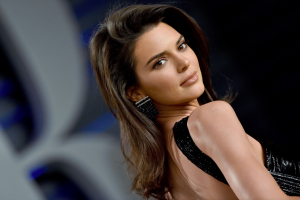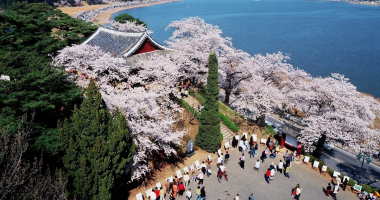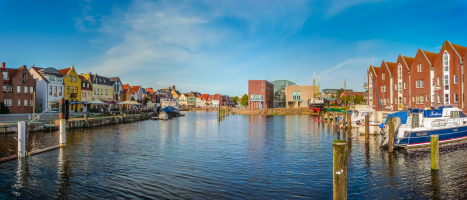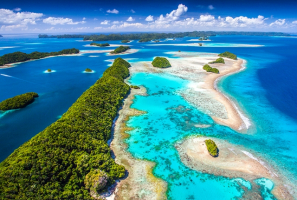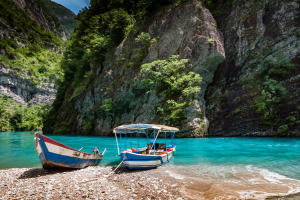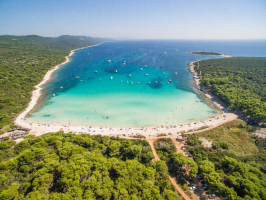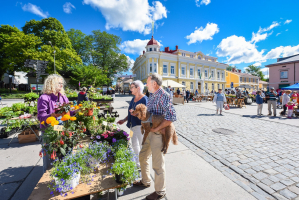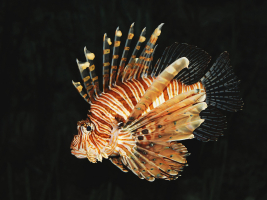Top 10 Most Beautiful Bluebirds
Many bird species have blue feathers, and each of them has a distinct coloring pattern in its feathers. Some birds have all blue feathers, while others have a ... read more...few blue feathers. Below is the list of the most beautiful bluebirds.
-
The Eastern Bluebird, also known as the Sialia sialis, is one of the most beautiful bluebirds native to North America. This bird can be found in woodlands, marshes, and fields, but it can also be found in orchards and gardens in various locations. The upper section of the eastern bluebird's plumage is blue, which fades into white and brown. When compared to female Eastern Bluebirds, males have more colorful plumage. Males have more vibrant hues, whereas females have duller and paler colors. The male and female Eastern bluebirds are easy to see and identify. The bird's wings, head, neck, and back are blue, while its belly is white and the feathers beneath its wings are brown.
Insects and other invertebrates make up about two-thirds of an adult bluebird's diet. The rest is made up of berries or wild fruits. Grasshoppers, crickets, katydids, and beetles are among its favorite foods, but it will also consume earthworms, spiders, millipedes, centipedes, sowbugs, and snails.
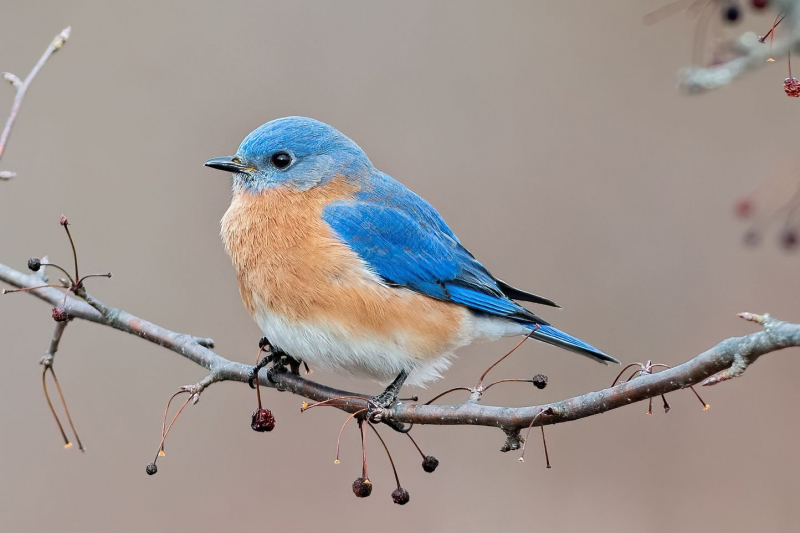
Photo: The Spruce 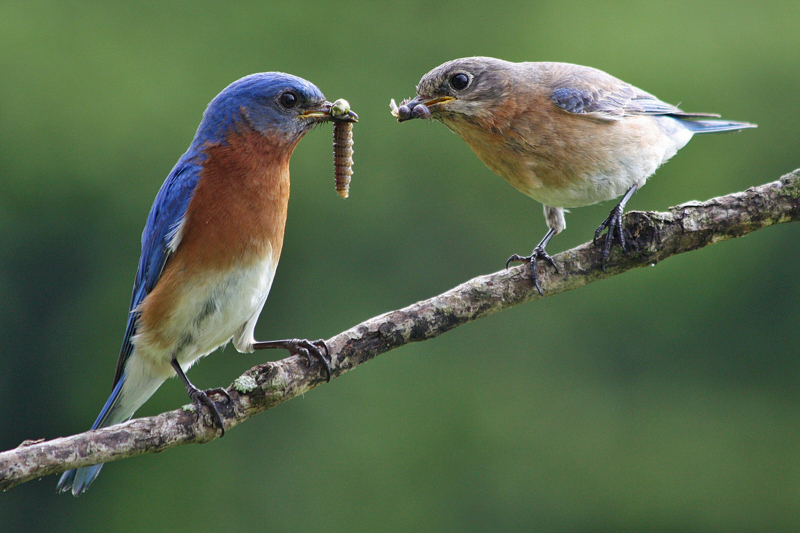
Photo: audubonva -
The Mountain Bluebird, also known as the Sialia currucoides, is a small North American migratory thrush bird. The plumage of this bird has a lovely blue color. Its plumage, except for blue, is also white. Mountain bluebirds have blue heads, necks, backs, and wings, which fade into white as they get closer to the belly. Aside from that, the bird is completely blue. Males and females are about identical in size, but their colors differ; females have more blue tones in their plumage. The female mountain bluebird's plumage, on the other hand, is duller than the males'. Males have solely blue and white plumage, while females have dull green and a grey-blue blend of feather hues.
The mountain bluebird is one of the most beautiful species in the Western United States. When tree hollows are not available, they may nest in holes in cliffs or dirt banks, which is more open terrain than the other two bluebird species.

Photo: Birds and Blooms Source: BWoodPhotography -
The Indigo Bunting, also known as the "Passerina cyanea," is a small seed-eating bird common to North American forests, farmlands, and marshes. This bird appears to be totally blue in hue. Only a few feathers on their wings, eyes and a few feathers in their tail are black; the rest of the bird is blue. The Indigo bunting's head is indigo. The sizes and weights of the males and females are similar, however, the colors are different. The male and female indigo buntings have significantly distinct appearances, with the females having a brownish, black appearance rather than the classic blue appearance of the indigo bunting. The plumage of young indigo bunting birds is a rainbow of colors, including blue, indigo, black, green, and brown.
The female is the only one who builds the nest and incubates the eggs. During the summer, the indigo bunting eats mostly insects, while during the winter, it eats mostly seeds.
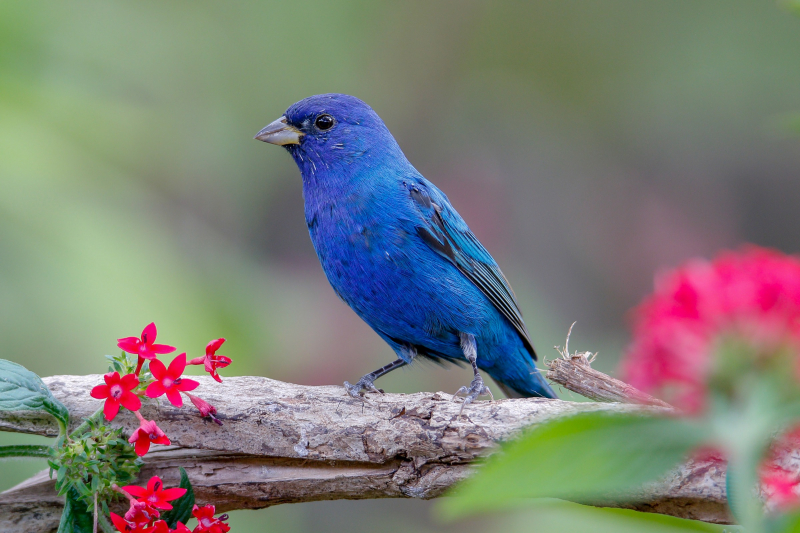
Photo: National Audubon Society 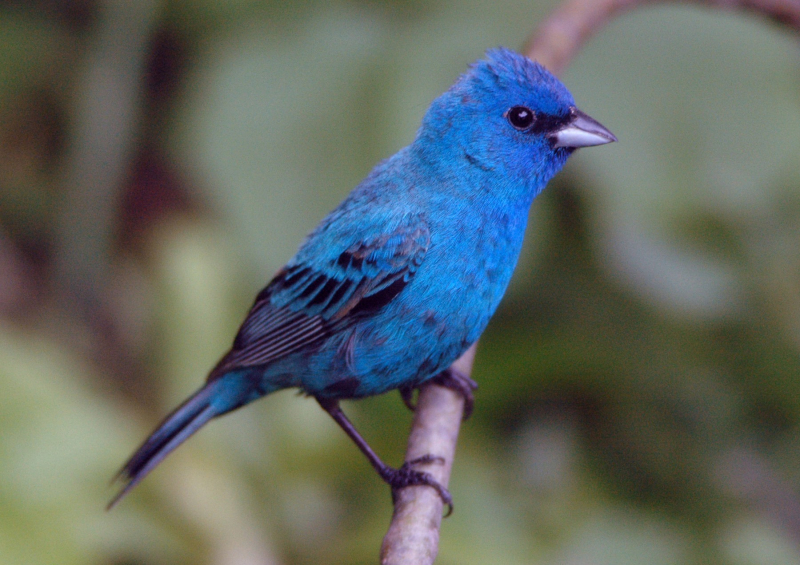
Photo: Door County Pulse -
The Western Bluebird, also known as the Sialia Mexicana, is a tiny bird in the thrush family of North America. The Western bluebird’s plumage is blue, brown, and black in color. The bird's head, wings, and back are all blue, fading into brown towards the wings and white towards the belly. A couple of the feathers on the wings are also black and brown in color.
It is one of the most beautiful bluebirds in North America. In terms of weight, size, and wingspan, the male and female are slightly different from one another. And about plumage hues, they are also distinct from one another. The males' plumage has brighter color combinations, but the females' plumage has duller hues. In the beginning, young western bluebirds have duller colors in their plumage and resemble the female. Western bluebirds have a tradition of nesting in cavities, or holes in trees, or nest boxes.

Photo: Sacramento Audubon Society Source: naturalist97333 -
The Hyacinth Macaw, whose scientific name is Anodorhynchus hyacinthinus, is a parrot-like bird native to Central and South America. With a length of about one meter, it is the longest parrot specie. While it is easily recognized, it is sometimes confused with the smaller Lear's macaw. The Hyacinth Macaw's population is declining, which is why they've been designated as a vulnerable species.
It is also well-known as one of the most beautiful bluebirds. The blue plumage of this parrot is accented with a few yellow feathers and a golden ring around their black eyes. Some of the birds in this species have blackish-blue plumage. Females and males have nearly identical physical appearances, making it difficult to distinguish them based on looks alone. The young birds of the Hyacinth Macaw are identical to the adults. They are captured and marketed as pet birds due to their attractive appearance. As a result, their population has decreased.
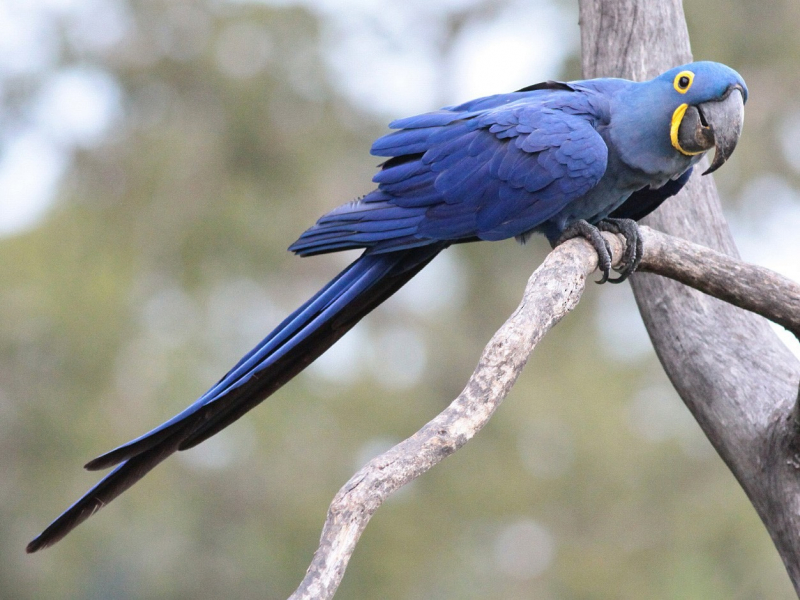
Photo: eBird Source: Terra Mater -
The Aphelocoma California, popularly known as the California Scrub-Jay, is a tiny bird from the Corvidae family which can be found in North America. This lovely bird's plumage is also blue in color. Its plumage includes white, black, brown, and grey colors in addition to blue. The head, rear of the neck, wings, and tail feathers are all blue in hue.
While the belly and in-ring parts around the neck are white, the outer side of this ring is black, with a few wing feathers and most of the tail feathers being black as well. In terms of color, weight, and size, females differ from men. In comparison to the males, female California Scrub-Jays are smaller, whiter, and weigh less. This distinct distinction makes it simple to distinguish between the two birds. The nonmigratory California scrub jay can be seen in urban settings, where it can become tame and attract bird feeders.
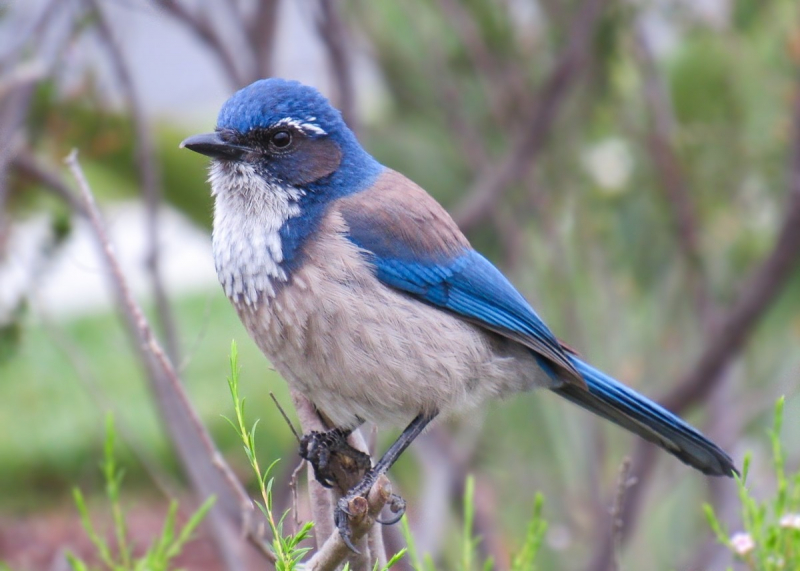
Photo: eBird 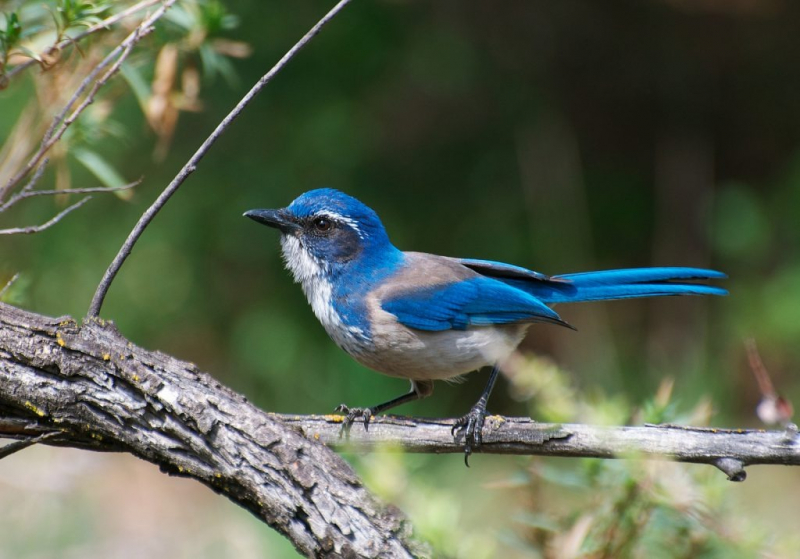
Photo: Celebrate Urban Birds -
The Blue Grosbeak, commonly known as Passerina caerulea, is a medium-sized bird in the Cardinalidae family of North American passerine birds. It is mostly a migratory species that spend the winter in Central America and breeds in northern Mexico and the southern United States. This bird's plumage is a magnificent mix of blue, brown, black, and white. The blue color which makes it one of the most beautiful bluebirds stands out more on the back of the bird, as well as in the wings and the head and neck ring. The brown and black colors are unevenly spread throughout the bird's plumage, including the wings and tail.
Instead of blue, the female Blue Grosbeak has brownish plumage. That is why females differ from males in appearance. Both the tails and wings of females are black in hue. Both male and female blue grosbeaks have a whitish belly.
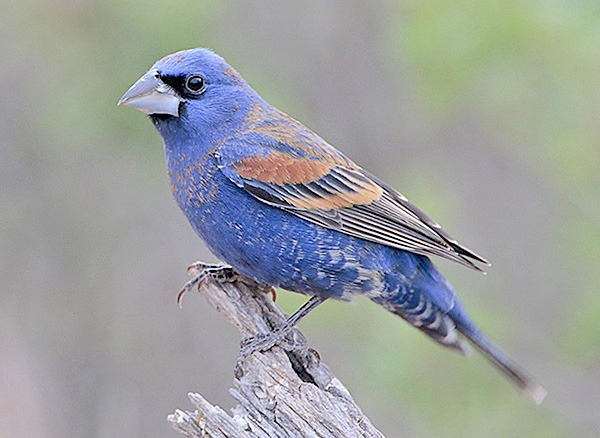
Photo: Birdzilla Source: Bird World -
The Aphelocoma wollweberi, popularly known as the Mexican Jaybird, is a medium-sized bird native to North and Central America. It's a New World Jay, which means it's a bird from the New World. It eats acorns and pine nuts mostly but also eats a variety of other plant and animal foods. It has a cooperative breeding system in which both the males and females raise their young birds. This bird's plumage is a stunning combination of blue, white, and grey. The gray-breasted jay is another name for this bird. The Mexican jaybird's upper plumage, head, wings, back, and tail are all blue, while the breasts are grayish and the belly area is white.
In terms of plumage color, body size, and wingspan, females differ significantly from males. In comparison to male Mexican Jaybirds, females are paler, duller, and shorter. They can be found in the majority of the woodlands and farmlands that run between North and Central America.
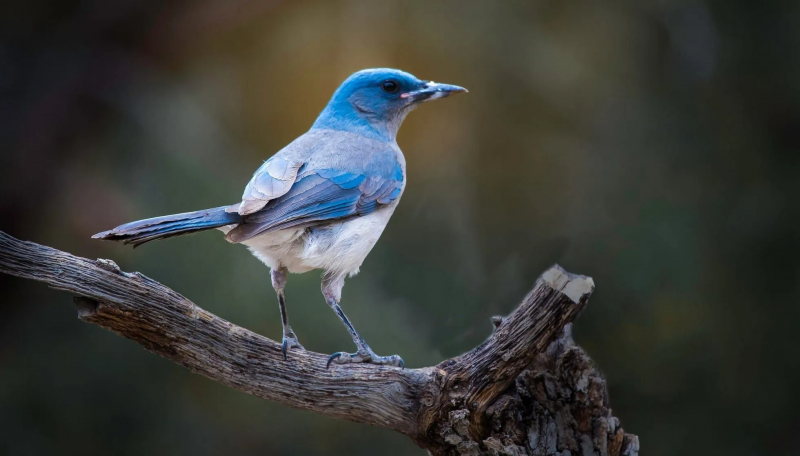
Photo: Kidadl 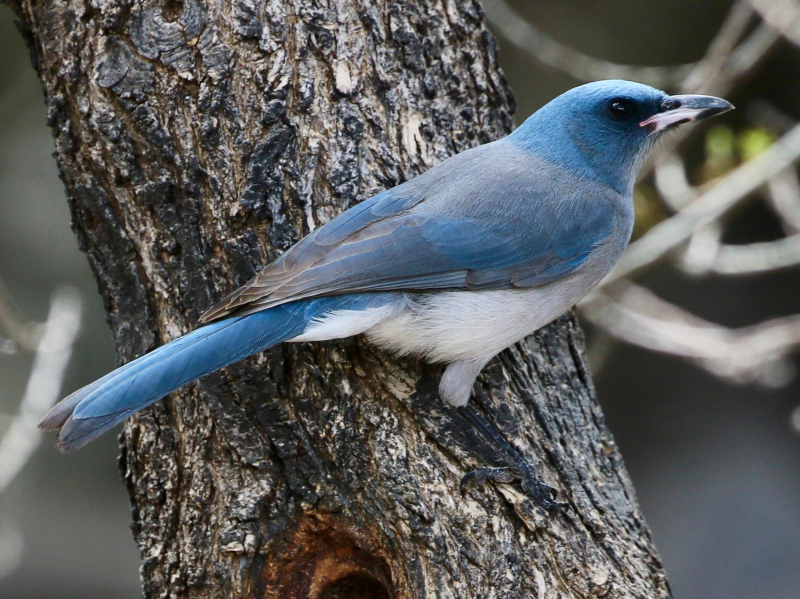
Photo: eBird -
The Steller's Jay, also known as the Cyanocitta stelleri, is a tiny bird of the Jay family. This bird is found in farmlands, marshlands, and forests throughout North America. Long-crested jay, mountain jay, and pine jay are some of its other names. It's the only crested jay found west of the Rockies. The Steller's Jaybird has a lovely multi-colored plumage, with blue being the most noticeable color. Above their heads, they have a lovely blackish-blue crest. This blackish-blue hue begins to fade into a true blue hue.
The bird's wings and tail are also blue. The Steller's Jay's underbelly and belly are likewise bluish. Female Steller's Jays differ from males in that they have a lighter body and a paler and duller plumage. In their early days, juvenile Stellar's Jaybirds are identical to females, but as they grow older, they begin to choose colors according to their sexes.
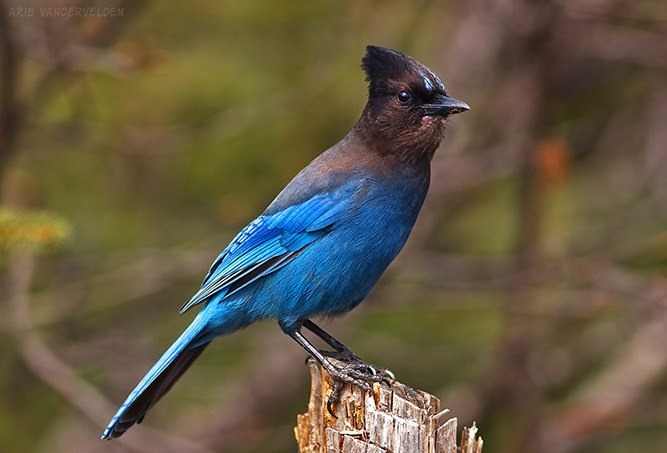
Photo: Comox Valley Record Source: LesleytheBirdNerd -
The Blue Jay, also known as the Cyanocitta cristata, is a tiny passerine bird belonging to the Corvidae family. This bird is also found in North America, primarily in the coldest regions. Seeds and nuts, such as acorns, which it may bury to eat later; soft fruits; arthropods; and occasionally small vertebrates are the major foods of the blue jay.
Its entire body is covered in gorgeous blue, black, and white-gray plumage. The Blue Jay's blue color can be observed on its chest, back, wings, and tail, among other places. It features a black ring around its neck and black and white lines running through its wings and tail. It has a grayish-white belly. Some features can distinguish males and females. The female blue jay's plumage is lighter and the colors are duller. Females have a shorter body and wingspan than males. They're also lighter. The female blue jays have a similar appearance to the younger blue jays.
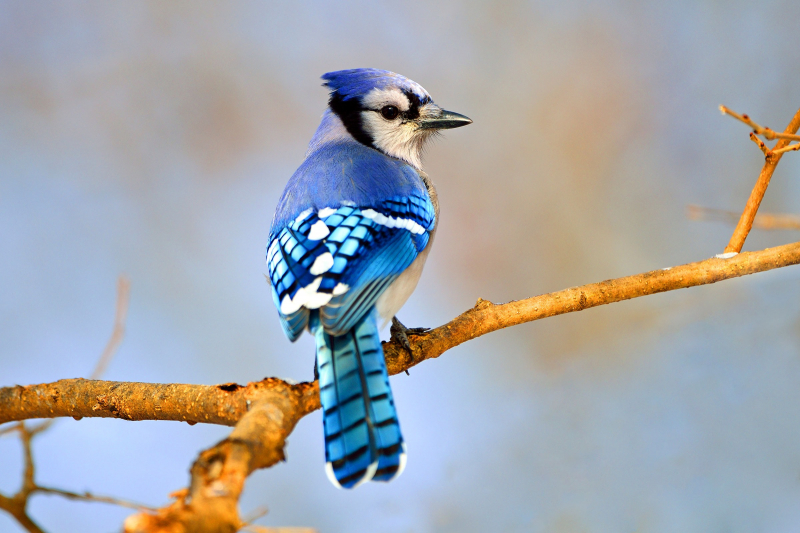
Photo: National Audubon Society 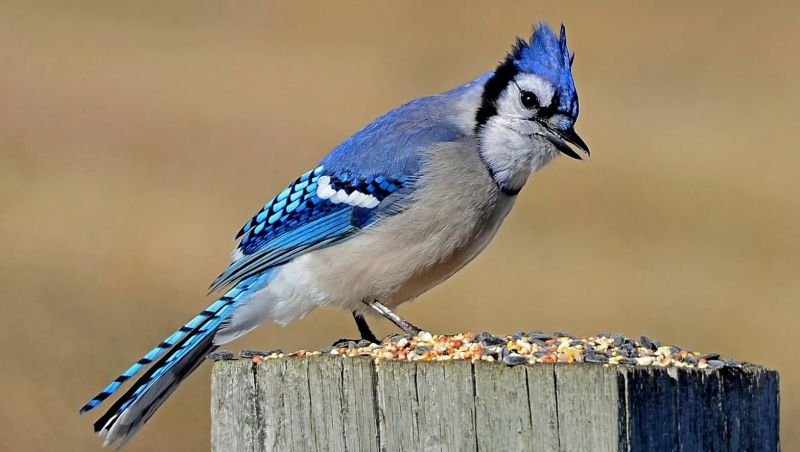
Photo: Fosters














